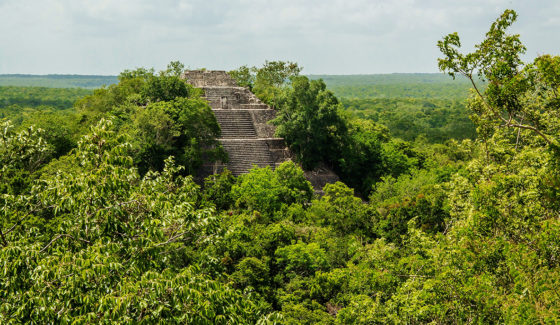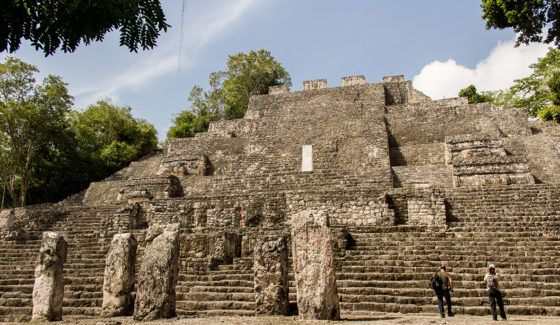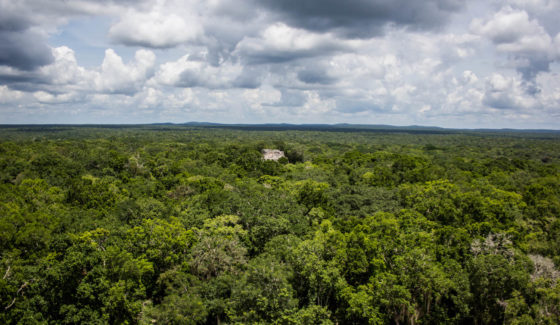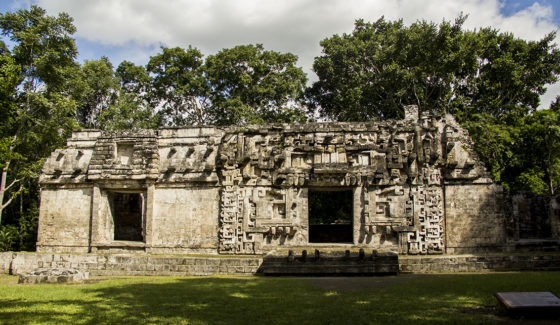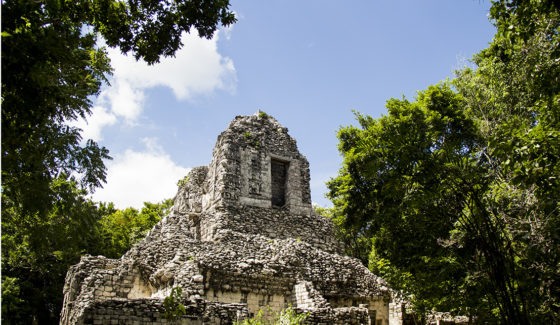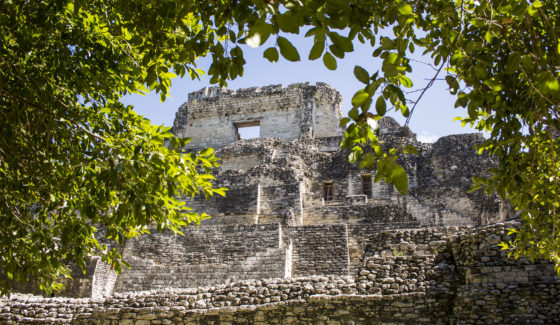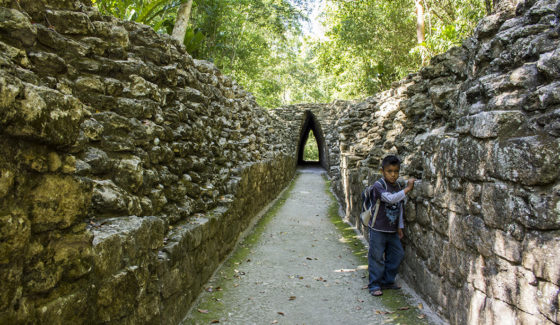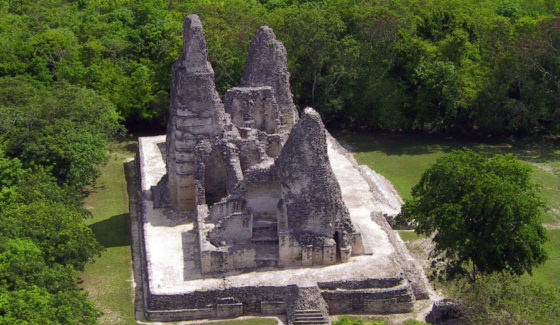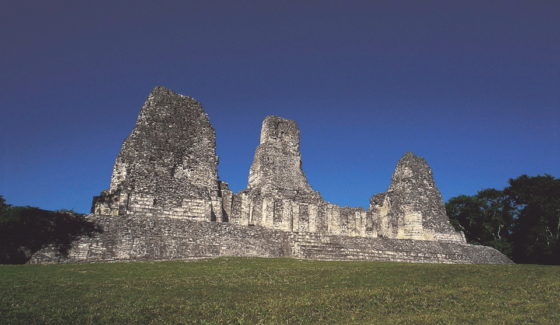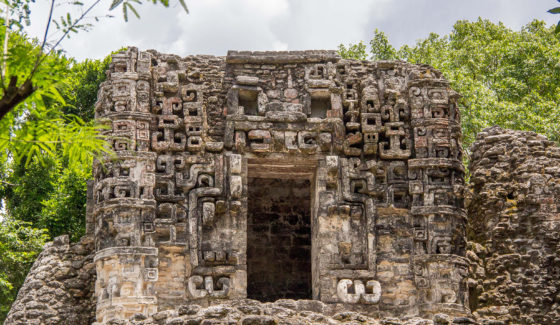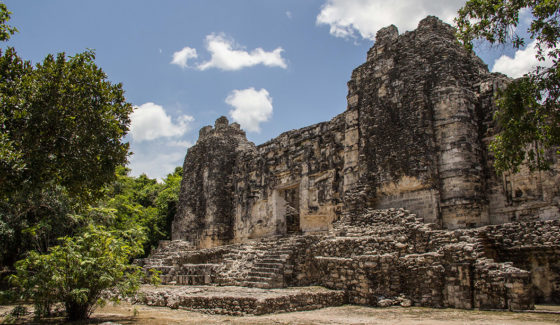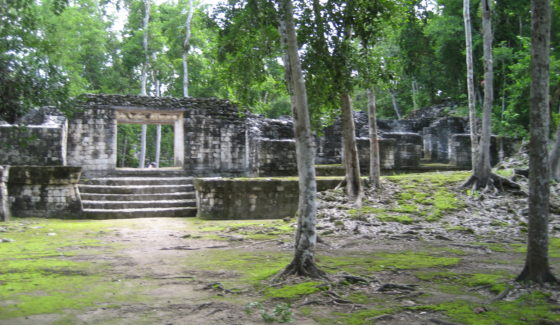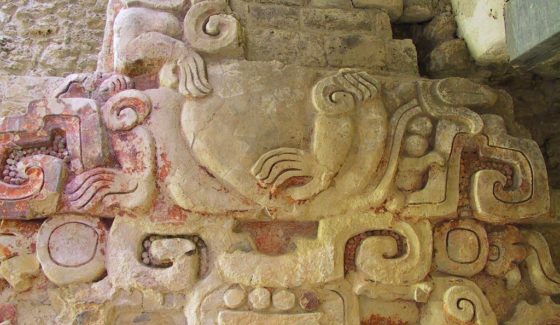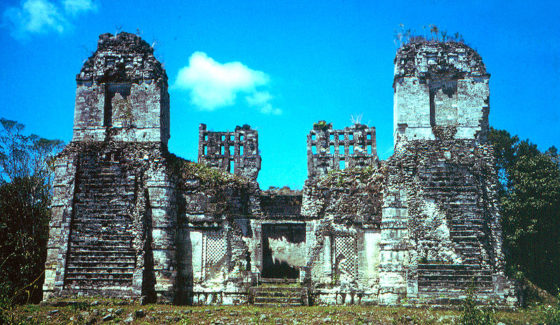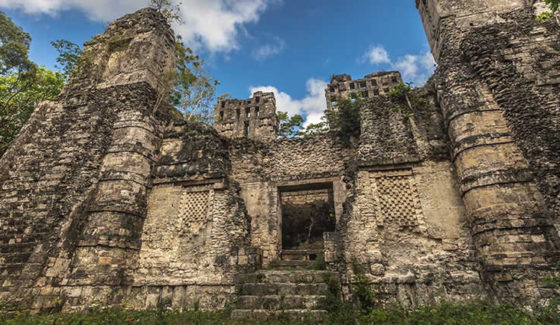Archeology!
The heart of the ancient Maya.
The Calakmul region holds innumerable pre-Hispanic mysteries waiting to be explored. Discover the 7 archaeological zones and learn about the legacy of the ancient Mayans.
“Two adjacent hills”, formerly known as Oxtetun. Imagine structures up to 50 meters high and the grandeur of the Mayan culture hundreds of years ago. A unique site that highlights its impressive constructions over the centuries, its more than one hundred commemorative stelae, as well as a large number of tombs, accompanied by numerous vessels, masks, and jadeite and snail necklaces. Calakmul: outstanding example of a Mayan capital.
“The house of the snake’s mouth” (chi-mouth, can-serpent, ná-casa). Chicanná stands out for the beauty of its Structure II, decorated with a huge mask of Itzamná, the “creator god”, with remains of red and blue stucco (a mixture of resins from different trees), as well as majestic Mayan glyphs.
“Ravine or Canyon Formed by Water”, alluding to the moat built as a protection strategy around the city. In addition, underground passageways have been discovered at the foot of the structures. A place of incomparable beauty and history.
“Cat’s tail”. On the outskirts of the town of Xpujil, a contrasting and enigmatic archaeological site erupts, which dazzles with its fusion of architectural styles and particular designs. The site is easily accessible, and can be covered in a short time with a walk suitable for everyone.
Located 8 km from the Eugenio Echeverría Castellot II community, the tour of the area transmits calm and harmony. In addition, the humidity of the jungle allows small plants to cover a large part of the structures and passages, creating a setting that will transport you to the splendor times of this ancient city.
This Mayan city, which covers barely one square kilometer, is famous for sheltering the “frieze of the universe”, an archaeological piece of polychrome stucco, unique in the area and with stylized and interspersed engravings of species such as jaguars and snakes.


